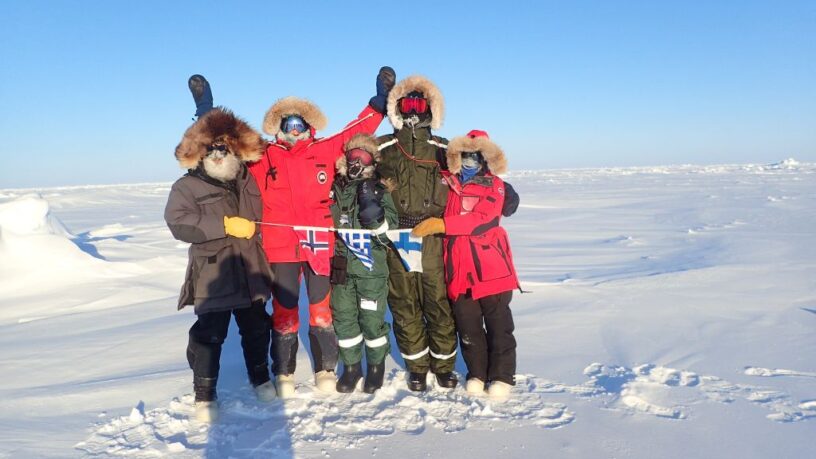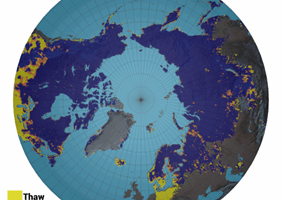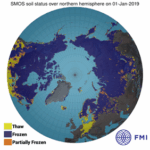Operation Ice Camp (OIC), formerly known as Ice Exercise (ICEX), is a 3-week operation designed by the US Navy’s Arctic Submarine Laboratory to research, test and evaluate operational capabilities in the Arctic region every other year. The Finnish Meteorological Institute teamed up with the University of Tromsø and Colorado State University to investigate snow on sea ice during the OIC in March 2024 some 200 nautical miles off the north coast of Alaska on the Beaufort Sea.
The team collected snow observations from diverse ice types and floes in the surroundings of the ice camp. The scientists noticed that multi-year ice is getting thinner, second-year ice is more deformed than first-year ice affecting the snow distribution over it, and snow on first-year ice 3 times thinner than multi-year ice and very salty. In the months following the OIC the team processed the collected data that will contribute to snow and sea ice model developments.
In the wintertime, the Arctic Ocean is a heat reservoir, and snow is a blanket preventing that heat from escaping into the cold atmosphere. The heat difference between the equator and the poles is what drives the global atmospheric circulation that controls the Earth’s climate as we know it. For example, the polar jet stream, a large-scale movement of air surrounding the poles, plays a crucial role in shaping the climate, by influencing weather patterns and the distribution of heat and moisture across the globe. When the heat difference between the equator and the poles gets disrupted, the jet stream becomes wiggly and unable to contain the cold air into the poles. This results in more frequent extreme weather events in the mid-latitudes, such as increased precipitation and flooding, prolonged droughts, and disrupted seasonal patterns. It also allows more frequent warm air intrusions towards the poles, further destabilizing the cold air trapped in the poles by the jet stream.
Snow cover has a profound impact on the evolution of sea ice. Its high optical reflectivity and thermal insulation affect the rate and timing of seasonal sea ice growth and melt. The Arctic Ocean has gone through a transition, being nowadays dominated by younger and thinner sea ice. Snow cover becomes more important over thinner sea ice, by gaining control over the heat fluxes. It is therefore crucial to monitor the snow properties over sea ice, to understand and represent them better in climate models.
More information
Dr. Ioanna Merkouriadi, Finnish Meteorological Institute, Ioanna.Merkouriadi@fmi.fi








Leave a Reply
You must be logged in to post a comment.